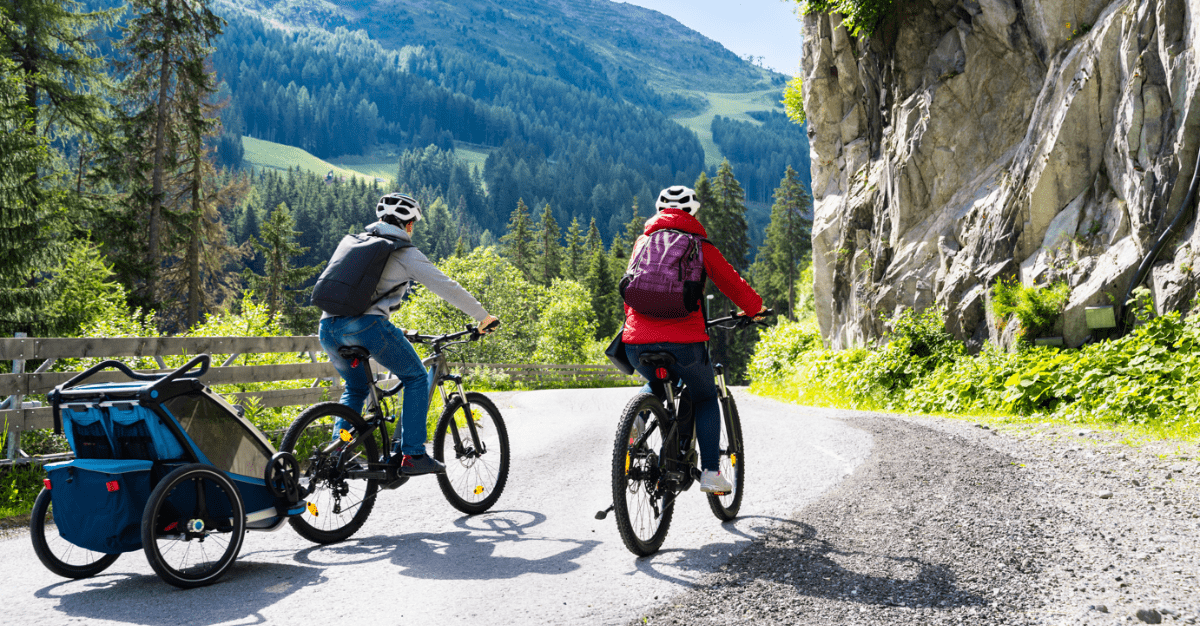In Italy in 2023, cycling tourism recorded the presence of 56.8 million people, generating an economic impact that exceeded 5.5 billion euros.
These data were reported in the 4th edition of the Report “Traveling by bike 2024“, produced by ISNART and Legambiente with Bikenomist, and the Cycle Tourism Forum was presented at the Bologna Cycle Tourism Fair.
The bicycle touring it is establishing itself as a growing sector in the Italian tourism panorama, responding to the demand for exciting and engaging experiences. From an emerging phenomenon in 2019, it has become a significant component of the country's tourist offer, attractive to customers with diversified interests and high spending capacity.
This positive trend is supported by data from’Observatory on the Tourism Economy of the Chambers of Commerce, which report over 56 million cycle tourism presences in 2023, corresponding to 6.7% of the total tourist presences in Italy. Not only has cycle tourism recovered pre-pandemic figures, but it also recorded an increase of 4% compared to the peak of Italian tourism in 2019.
This phenomenon reflects a growing demand for authentic and exciting tourist experiences, helping to consolidate cycle tourism as one of the main forms of experiential and emotional tourism in the country.
Cycle tourism has taken on a significant role in the Italian tourist economy, with a direct economic impact estimated at over 5.5 billion euros in 2023, recording an increase of 35% compared to 2022 and of 19% compared to 2019, thus reaching 4, 6 billion euros. On average, cycle tourists spend 95 euros per day on goods and services, while foreigners reach 104.5 euros per day. These figures are remarkable, especially considering that the overall average daily expenditure of tourists in Italy is 59.6 euros.
According to data from’Observatory on the Tourism Economy of the Chambers of Commerce, the profile of the cycling tourist in Italy during the summer of 2023 is well defined. Mainly, these are Millennials (47%, up 10% compared to 2022) with a medium-high level of education, who work (86%, up 7.5% compared to the total number of tourists) and have a medium income (52% ) or even medium-high (24%). This economic profile makes it a very interesting target for Italian tourist destinations.
Cycling tourists in Italy prefer it travel accompanied, mainly from your partner (41%), family (26,7%) or friends (17%). He is a multifaceted tourist, in whom the use of the bicycle combines a vast range of interests and tourist motivations: from visits to the artistic and monumental heritage (37%) to immersion in nature (36,4%), from food and wine experiences (24%) to general well-being (8%).
Six out of ten cycle tourists rely on net to obtain information and plan their cycling holidays, highlighting an active and informed tourist profile. These cycle tourists prefer to organize every detail of their holiday in advance, considering the logistical complexity of the activity (equipment, transport, accommodation). A notable fact is that 22% of foreign cycle tourists are inclined to return to Italy after a positive experience, showing a loyalty potential to be exploited.
Furthermore, cycle tourists are inclined to leave online reviews, providing information on routes and technical suggestions, especially to their online community, with which they share a sense of belonging and solidarity. Social media, in particular TripAdvisor (42%), Facebook (33,2%) and Instagram (22%), are the preferred channels for this type of interaction.
A third of tourists chose a specific cycle route because it was well maintained, underlining the importance of maintaining cycle infrastructure. The 26.2% preferred routes immersed in suggestive environments, reflecting an interest in sustainability and nature. On 22.4% opted for a destination thanks to a new cycle route, demonstrating interest in innovations in the infrastructural offer.
As for the means of transport, almost half chose the mountain bike, the 24% the racing bike, the 15,4% the city or walking bike, and the 12% the e-bike, which is expanding the user base cycle tourism, including those who are not necessarily sporty.

